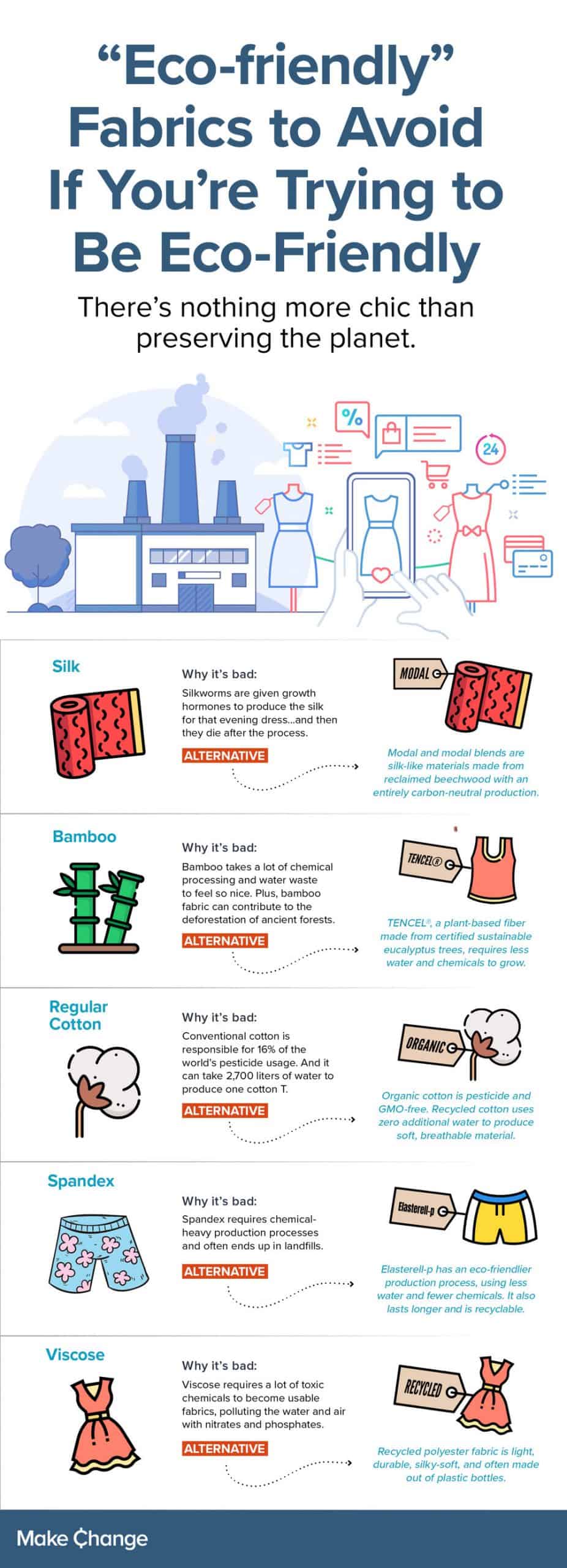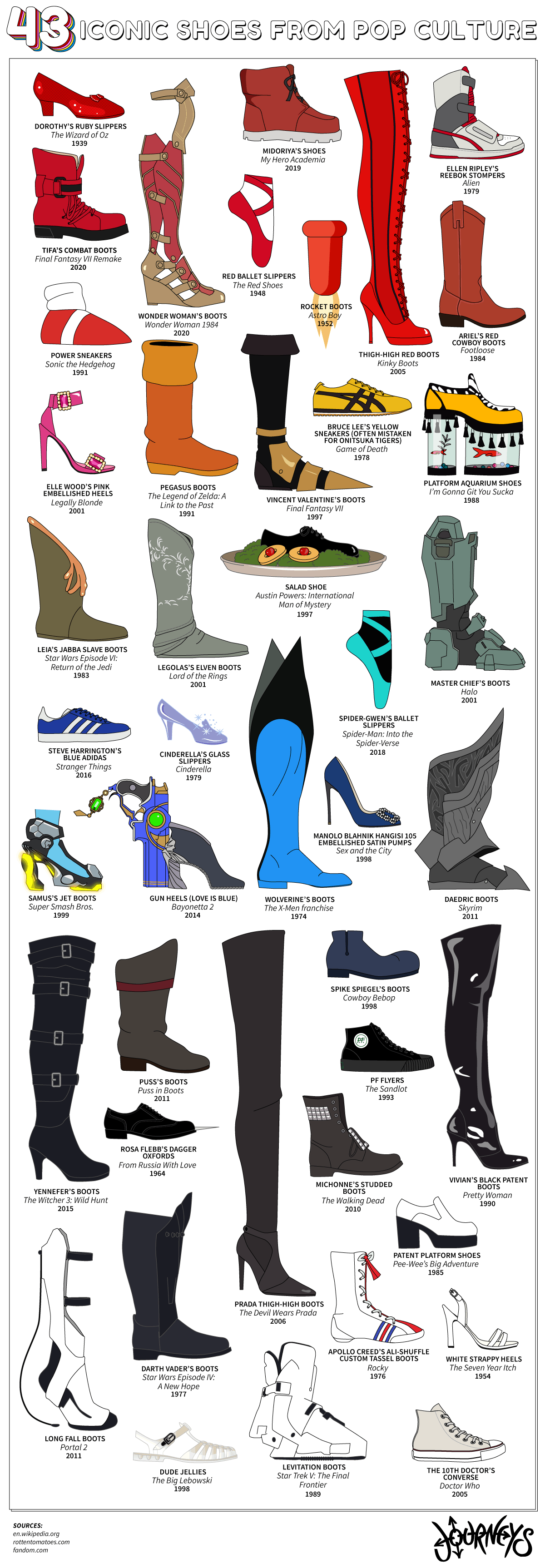
It’s time to start looking after the environment. This is, after all, our only home. If we ruin the earth, we have no place to run. There are so many things, large and small, that we can do to reduce our impact on the environment. If each of us becomes aware of how our choices affect the environment, we can take action and reduce the damage.
Even the fabrics that we choose can make a difference. In fact, the fashion industry has recently been in the spotlight for becoming one of the largest contributors to global pollution. This infographic throws cold water on some supposedly eco-friendly fabrics and offers alternatives for the fashion-conscious environmentalist.
All of these fabrics, most of them made from natural fibers, carry a heavy environmental impact. Alternatives use fewer resources. Viscose, for example, is an artificial fiber, which is made from wood pulp. Forests are often cleared to make way for pulpwood plantations to produce the pulp for this fabric. The wood is also treated with hazardous chemicals that can enter the environment. Recycled polyester offers a great alternative as it helps to divert plastics from landfills around the world, and it makes a soft and silky fabric.
Cotton is a pesticide-intensive fiber. Pesticides are detrimental to human life and they are slowly killing off the insects that we need to sustain life on earth. Organic cotton, on the other, hand uses no pesticides and also requires no additional water.
Other sustainable fabrics include flax and hemp, harvested from plants that require fewer pesticides and less water. They are also fast and easy to grow. Let’s make the right choices and save our planet.





